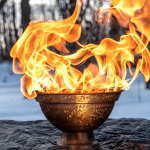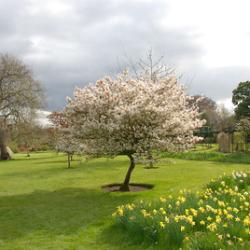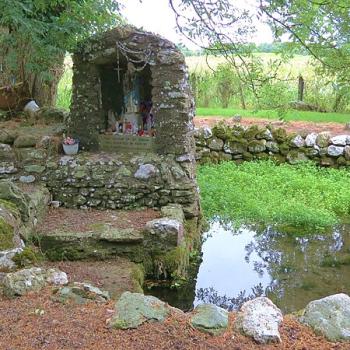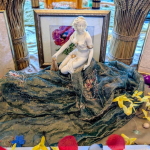I have a friend who says that February is the longest month of the year. Even though this seems nonsensical, I know what she means. It’s still deep winter, but the holidays are over, the Yule lights have been put away — and there’s nothing much to distract from the bare, white winter landscape except for the frigid deep freeze. The cold keeps us inside more than usual, so many of us get cabin fever, that restless, bored, listless, frustrating desire for something you can’t find unless you flee Wisconsin for the southlands.
February is the fallow time of year, with bleak landscapes that can either be beautiful in their stark simplicity or deadly boring because of their lack of color and activity. No iridescent hummingbirds hover at our back window these days as they did in summer, and the chickadees, nuthatches, juncos and downy woodpeckers who keep me entertained when they come to our feeder are black-and-white just like the season. The occasional cardinal is the exception that proves the rule. As a result of this lack of warmth and color, it can be a long and difficult time until spring.
This is the season of Brigid or Imbolc, the traditional pre-Christian holiday for this time of year (February 1st or 2nd), a holiday which has come down to us as Groundhog’s Day, when Jimmy (or Punxatawny Pete) sees his shadow in the sunlight. Winter is half over (by the calendar at least) — but it is usually the coldest time of the year. Nature seems to be resting and preparing for the new life of spring. Covered with a blanket of snow, seeds that fell in the autumn are protected until spring when they begin to grow. All plant life seems to sleep in the death-like grip of winter, but the days are longer now, and the increasing sun promises the renewal of spring. Just like Jimmy, we emerge a little from our hibernation to look for the light.
In our agrarian past, when holidays were determined by the seasons and their weather, Imbolc or Brigid was the end of the Yule season, since Yule was celebrated for the six weeks of deep winter. With increasing industrialization and increasing demands for productivity even during the winter months, the Yule holiday shrank in length — first to two weeks ending on 12th Night, then to one week ending on New Year’s Day, and finally to a long weekend or even occasionally one day.
Originally one of the purposes of Imbolc was to banish winter, easier to do in Northern Europe where winter is usually shorter and less severe than here in Wisconsin. This was done by burning Yule greens or a figure representing Winter, sometimes made of straw, sometimes resembling a snowman. The fire gave its sympathetic magic to strengthen the young sun and help to awaken the dormant life of the earth. The fires of Imbolc also symbolized the heat of the new growing season and the goddess’s sexuality, which created the fertility of the land in the first place. When the church took over this holiday, it became Candlemas, and the priests lit candles to represent those fires. (I’ve often wondered what those celibate men thought they were doing?!)
As a celebration whose purpose it is to awaken new life out of the darkness and cold of winter, Imbolc has an interesting definition. It means “in the belly,” referring to the gestation of nature and life in the belly of the Mother Goddess. Just like a pregnancy, all of nature is pure potential, waiting to be fulfilled. At this time of year, something in us begins to quicken as our spirits long for the promise of rebirth, for spring, hopefully soon to come.
So I’ve written a new chant for the purpose of kindling a new vision of what will come to us during this gestational phase of life.
Here are the lyrics:
“Look into the darkness,
Discover a new light,
New vision, new dreams
Shining there so bright.”


















